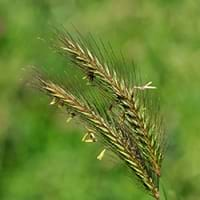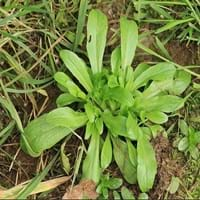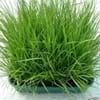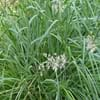Life Span
Perennial
Annual
Origin
North America, South America, Europe, Southern Africa, Asia
Europe, Northern Africa, Asia
Types
Not Available
not available
Habitat
meadows, Pastures, Wet lands
Floodplains, Not Available, Shores of rivers or lakes
USDA Hardiness Zone
Not Available
Not Available
AHS Heat Zone
Not Available
12-1
Sunset Zone
Not Available
A1, A2, A3, H1, H2, 1a, 1b, 2a, 2b, 3a, 3b, 4, 5, 6, 7, 8, 9, 10, 11, 12, 13, 14, 15, 16, 17, 18, 19, 20, 21, 22, 23, 24
Habit
Not Available
Rosette/Stemless
Minimum Height
Not Available
Minimum Width
Not Available
Flower Color
Yellow Brown
White, Lavender
Flower Color Modifier
Bicolor
Bicolor
Fruit Color
Not Available
Not Available
Leaf Color in Spring
Green, Light Green, Blue Green, Gray Green
Green
Leaf Color in Summer
Light Green
Not Available
Leaf Color in Fall
Not Available
Green
Leaf Color in Winter
Not Available
Green
Leaf Shape
Oblong
Elliptic to oblong
Plant Season
Not Available
Not Available
Sunlight
Full Sun
Full Sun, Partial Sun
Type of Soil
Loam, Sand
Loam, Sand
The pH of Soil
Not Available
Acidic, Neutral
Soil Drainage
Well drained
Well drained
Bloom Time
Spring, Summer
Early Spring, Spring
Tolerances
Deer resistant, Drought, Salt
Drought
Where to Plant?
Ground
Container, Ground, Pot
How to Plant?
Seedlings
Seedlings
Plant Maintenance
Medium
Medium
Watering Requirements
Keep the ground moist but not water-logged
Keep ground moist, Keep the Soil well drained, Medium, Requires regular watering
In Summer
Less Watering
Lots of watering
In Spring
Moderate
Moderate
In Winter
Lots of watering
Average Water
Soil pH
Not Available
Acidic, Neutral
Soil Type
Loam, Sand
Loam, Sand
Soil Drainage Capacity
Well drained
Well drained
Sun Exposure
Full Sun
Full Sun, Partial Sun
Pruning
No pruning needed in the early stages, Remove damaged leaves, Remove dead branches, Remove dead leaves
Remove damaged leaves, Remove dead leaves
Fertilizers
avoid high rate of nitrogen in spring, Nitrogen
All-Purpose Liquid Fertilizer
Pests and Diseases
Fungal Diseases, Head smut, Leaf rust, Stem rot
Not Available
Plant Tolerance
Deer resistant, Drought, Salt
Drought
Flowers
Not Available
Yes
Flower Petal Number
Single
Single
Edible Fruit
Not Available
No
Foliage Texture
Fine
Medium
Foliage Sheen
Matte
Glossy
Invasive
Sometimes
Sometimes
Attracts
Bees, Birds, Butterflies
Butterflies, Flying insects, Insects, Not Available
Allergy
Not Available
Not Available
Aesthetic Uses
Ground Cover
Not Used For Aesthetic Purpose
Beauty Benefits
Improve skin condition
Not Available
Environmental Uses
Erosion control, Food for animals, soil stabilisation
Air purification, Food for birds, Food for insects
Medicinal Uses
Not Available
No Medicinal Use
Part of Plant Used
Seeds
Flowers, Leaves
Other Uses
Food for animals
Added to salads, Used As Food
Used As Indoor Plant
No
No
Used As Outdoor Plant
Yes
Yes
Garden Design
Cutflower, Dried Flower/Everlasting, Edible, Wildflower
Edible, Herb, Vegetable
Botanical Name
Hordeum brachyantherum
VALERIANELLA locusta
Common Name
Meadow Barley
Mache, corn salad, common cornsalad, lamb's lettuce, fetticus, fieldsalat, nut lettuce, field salad,rapunzel
In Hindi
meadow barley
Lamb's Lettuce
In German
Wiese Gerste
Feldsalat
In French
orge prairie
Mâche
In Spanish
cebada prado
Miramores
In Greek
λιβάδι κριθάρι
Μαρούλι αρνιού
In Portuguese
cevada prado
Alface-de-cordeiro
In Polish
łąka jęczmienia
Roszpunka
In Latin
pratum hordei
Lactuca agni
Phylum
Magnoliophyta
Magnoliophyta
Class
Liliopsida
Magnoliopsida
Order
Cyperales
Dipsacales
Family
Poaceae
Valerianaceae
Genus
Hordeum
Valerianella
Clade
Angiosperms, Commelinids, Monocots
Angiosperms, Asterids, Eudicots
Tribe
Not Available
Valerianeae
Subfamily
Not Available
Valerianoideae
Number of Species
Not Available
Not Available
Importance of Meadow Barley and Lamb's Lettuce
Want to have the most appropriate plant for your garden? You might want to know the importance of Meadow Barley and Lamb's Lettuce. Basically, these two plants vary in many aspects. Compare Meadow Barley and Lamb's Lettuce as they differ in many characteristics such as their life, care, benefits, facts, etc. Every gardener must at least have the slightest clue about the plants he wants to plant in his garden. Compare their benefits, which differ in many ways like facts and uses. The medicinal use of Meadow Barley is Not Available whereas of Lamb's Lettuce is No Medicinal Use. Meadow Barley has beauty benefits as follows: Improve skin condition while Lamb's Lettuce has beauty benefits as follows: Improve skin condition.
Compare Facts of Meadow Barley vs Lamb's Lettuce
How to choose the best garden plant for your garden depending upon its facts? Here garden plant comparison will help you to solve this query. Compare the facts of Meadow Barley vs Lamb's Lettuce and know which one to choose. As garden plants have benefits and other uses, allergy is also a major drawback of plants for some people. Allergic reactions of Meadow Barley are Not Available whereas of Lamb's Lettuce have Not Available respectively. Having a fruit bearing plant in your garden can be a plus point of your garden. Meadow Barley has showy fruits and Lamb's Lettuce has no showy fruits. Also Meadow Barley is not flowering and Lamb's Lettuce is flowering. You can compare Meadow Barley and Lamb's Lettuce facts and facts of other plants too.





